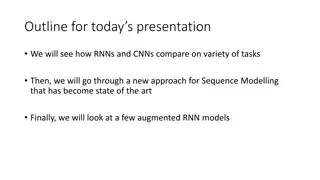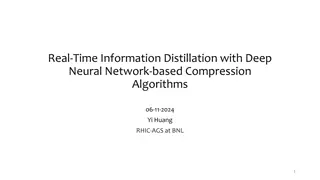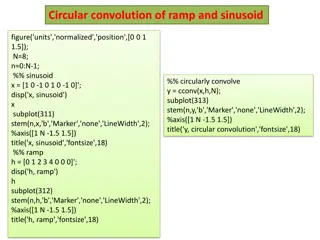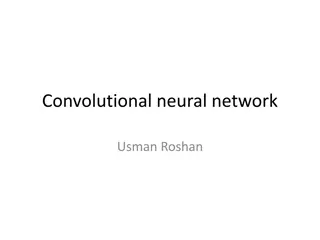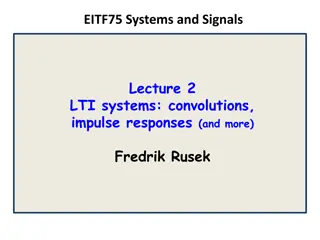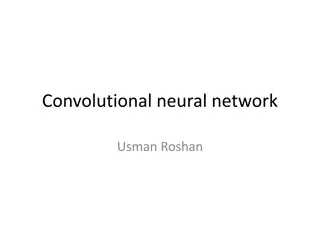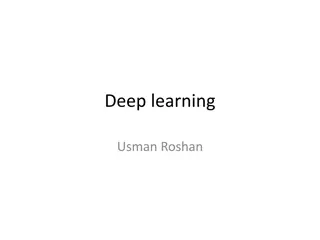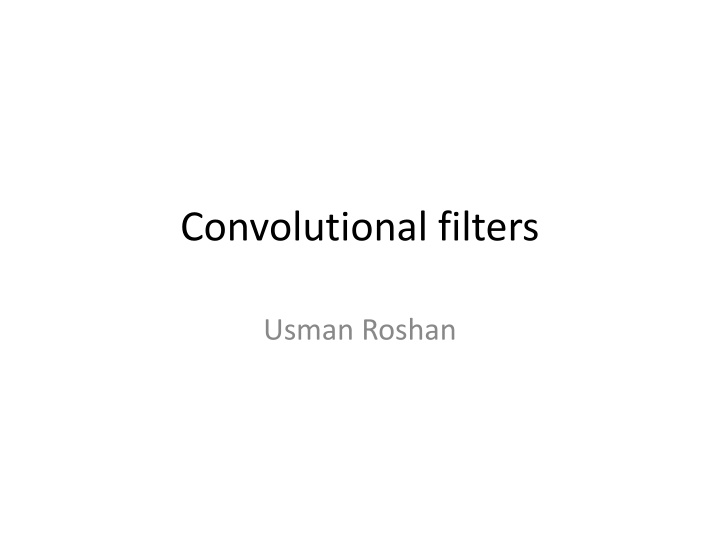
Convolutional Filters in Image Processing
Learn about convolutional filters in image processing, how they work, their applications, and their interpretation in machine learning. Explore examples and understand the role of convolutions in analyzing and classifying image features.
Download Presentation

Please find below an Image/Link to download the presentation.
The content on the website is provided AS IS for your information and personal use only. It may not be sold, licensed, or shared on other websites without obtaining consent from the author. If you encounter any issues during the download, it is possible that the publisher has removed the file from their server.
You are allowed to download the files provided on this website for personal or commercial use, subject to the condition that they are used lawfully. All files are the property of their respective owners.
The content on the website is provided AS IS for your information and personal use only. It may not be sold, licensed, or shared on other websites without obtaining consent from the author.
E N D
Presentation Transcript
Convolutional filters Usman Roshan
Convolutional filter Mathematically speaking a convolution is defined as an integral of two functions f and g after one is reversed and shifted We can think of a convolution as the product of two functions over a moving interval Used in various fields like electrical engineering (signal processing) and image processing
Convolutional filters on images A convolutional kernel for images is given by a k x k convolutional kernel and stride s. We apply the kernel starting from the top left of the image and shift it by s pixels to the right. Once we have reached crossed the image we then move the kernel down by s rows and repeat. If the stride takes the kernel outside the image we pad the missing data with zeros.
Convolutions in practice Convolutions are used to perform operations on images such as edge detection, sharpening, blurring, etc. These are custom convolutions designed to obtain specific effects We see several examples of convolution kernels here https://en.wikipedia.org/wiki/Kernel_(image_ processing)
Interpretation of convolutions In our machine learning framework data are feature vectors. So how do convolutions fit into this framework? We can think of a convolution as linear classifier since it is performing a dot product But the vector space is the space of patches of images instead of the entire image To understand this better let us look at a toy example
Understanding convolutions Consider four toy images on the right containing various objects. Let us divide each image into four quadrants and imagine we plot each quadrant as shown in the graph. We intentionally place the same object in each image in the same vicinity since they are likely to be similar (at least we assume so) In red we see four hyperplanes of the same dimensions as each quadrant Each hyperplane can by thought of as a convolution of half the dimension of the images and a large stride. The output of a convolution filter can be thought of as the classification given by the hyperplane
Understanding convolutions For each image we have four parts. Thus we represent each image as the output of each part given by the red hyperplanes (or convolutions) shown previously Are the images more similar as feature vectors? Indeed they are if we simply average the outputs given by each convolution and consider each convolution as a new coordinate to represent the image
Image classification with machine learning and classifications We will classify images with the linear support vector machine We will then perform convolutions and redo the classification to see if there is any improvement


